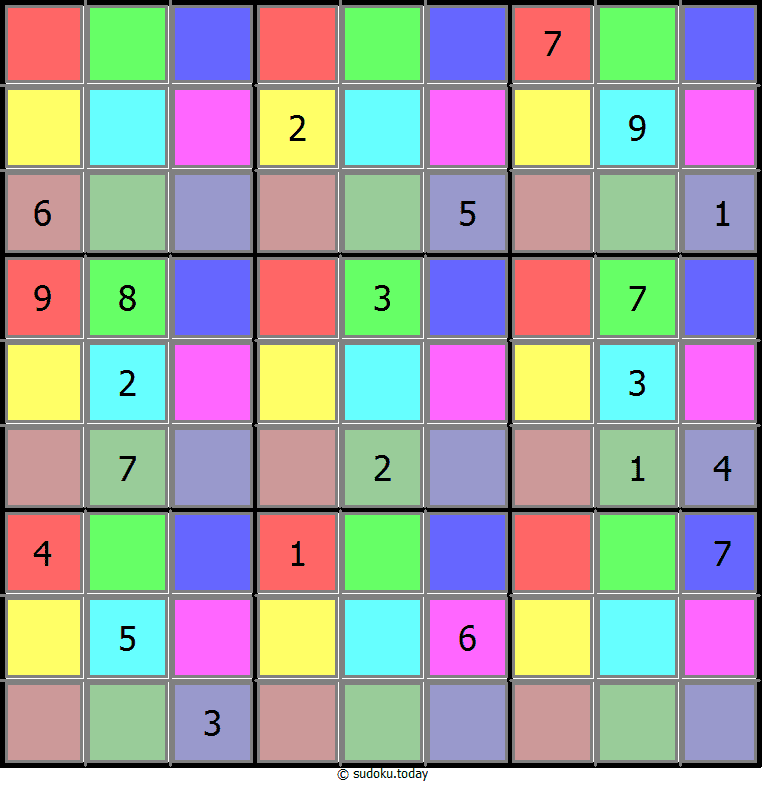
Thabit ibn Qurrah ➚ (ninth century CE) is credited with introducing the magic square to the Western World. The magic square reached Europe from China by way of the Arabs who brought news of many of the Chinese inventions with them along the Silk Road ➚. This image was first printed in the first or second century CE. It was regarded as the gift of the turtle from the River Lo ➚ (the turtle had the magic square inscribed on its back). The 3x3 solution shown is called the Lo Shu diagram ➚. Solutions were considered to have mystical properties and became part of the Chinese I Ching (Book of Changes) ➚ method of telling the future. The aim of the puzzle is to try to devise a new ordering of the numbers to complete the puzzle starting from scratch. Just as in Sudoku a number can only be used once in the grid. The puzzle is both a numerical and positional problem, as all the rows, columns and diagonal lines through the grid must add up to the same number. The Magic square ➚ is first documented in China two thousand years ago. Magic Square puzzles which involve the ordering of consecutive numbers into a square, comes to us from the mists of history. Puzzles continue to stimulate new development in mathematics, as you can see in the film A Beautiful Mind ➚. For many centuries people have been interested in creating and solving them. Sudoku has its deep roots in ancient number puzzles.

Sudoku originated in Switzerland and then traveled to Japan by way of America. The name Sudoku or more correctly 数独 comes from Japan and consists of the Japanese characters Su (meaning 'number') and Doku (meaning ‘single’) but it was not invented in Japan. The long and interesting history of the Sudoku is quite a puzzle in itself. To clear all tentative possibilities from the current square press the F7 key. Today's Dragon Tip Tentative possibilities To change the tentative possibilities just press SHIFT and the number you want to add to the current square.


 0 kommentar(er)
0 kommentar(er)
